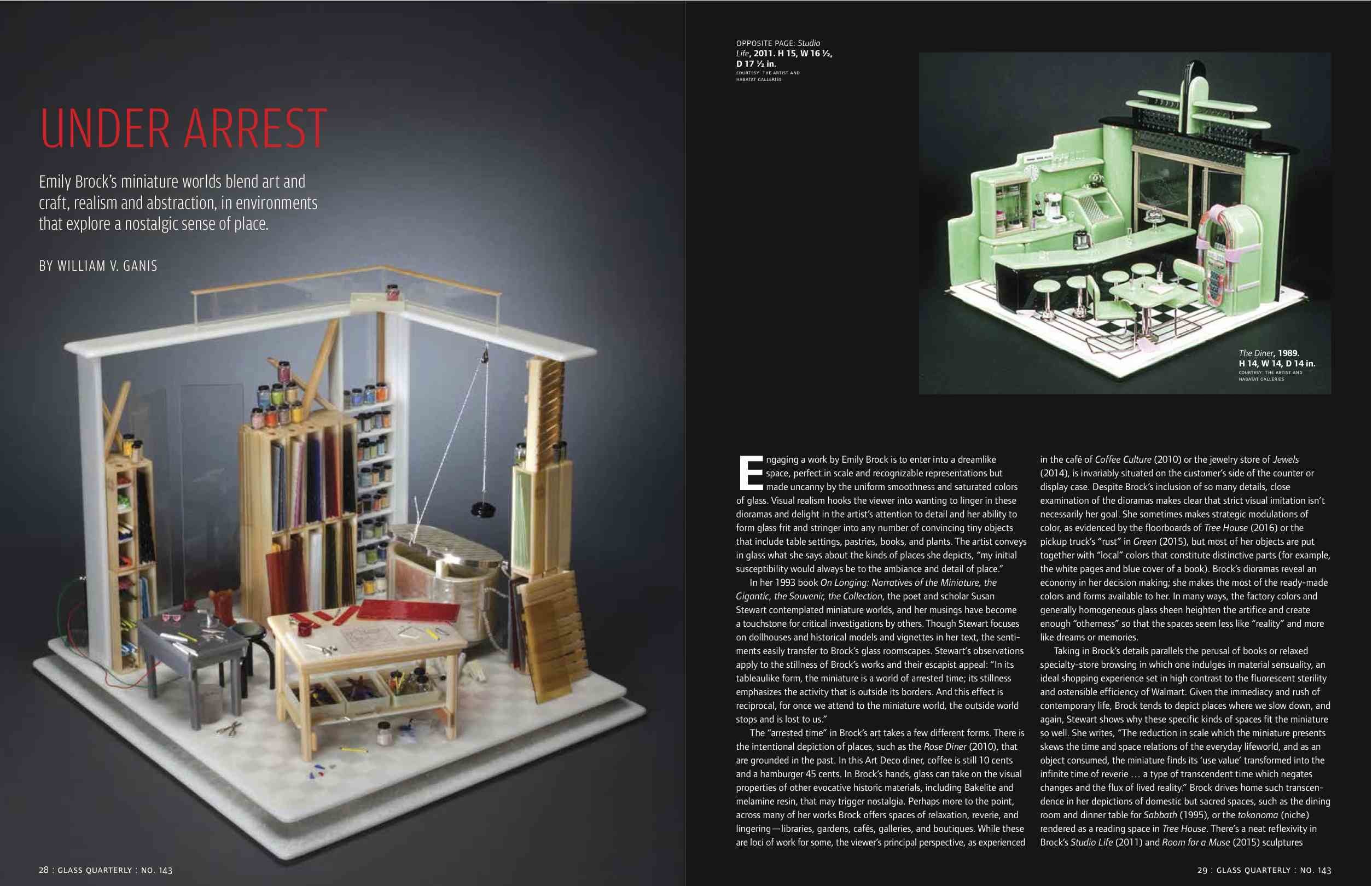The Summer 2016 edition of GLASS: The UrbanGlass Art Quarterly (#143) is hitting newsstands and subscriber mailboxes next week. It comes bundled with the just-published 2016 edition of New Glass Review (#37), a special subscriber bonus at no additonal charge (the special GLASS plus New Glass Review bundle is also available at select newsstands, but at a higher cover price). Gracing the cover of the new edition of GLASS is a striking work by hot sculptor Martin Janecky, who has built on the advances of William Morris and his collaborative team, and added his own techniques to take three-dimensional glass into portraiture, with new levels of detail and precision. Students flock to Janecky’s classes, awed by his ability to sculpt full-scale human busts in real time, statues emerging magically while the glass is still hot on the pipe. Contributing editor John Drury experiences the magic by sitting for a portrait by the rising Czech star as part of his research for this article, which examines how Janecky is moving into more complex rendering of human form while developing a rationale for his highly realistic approach.
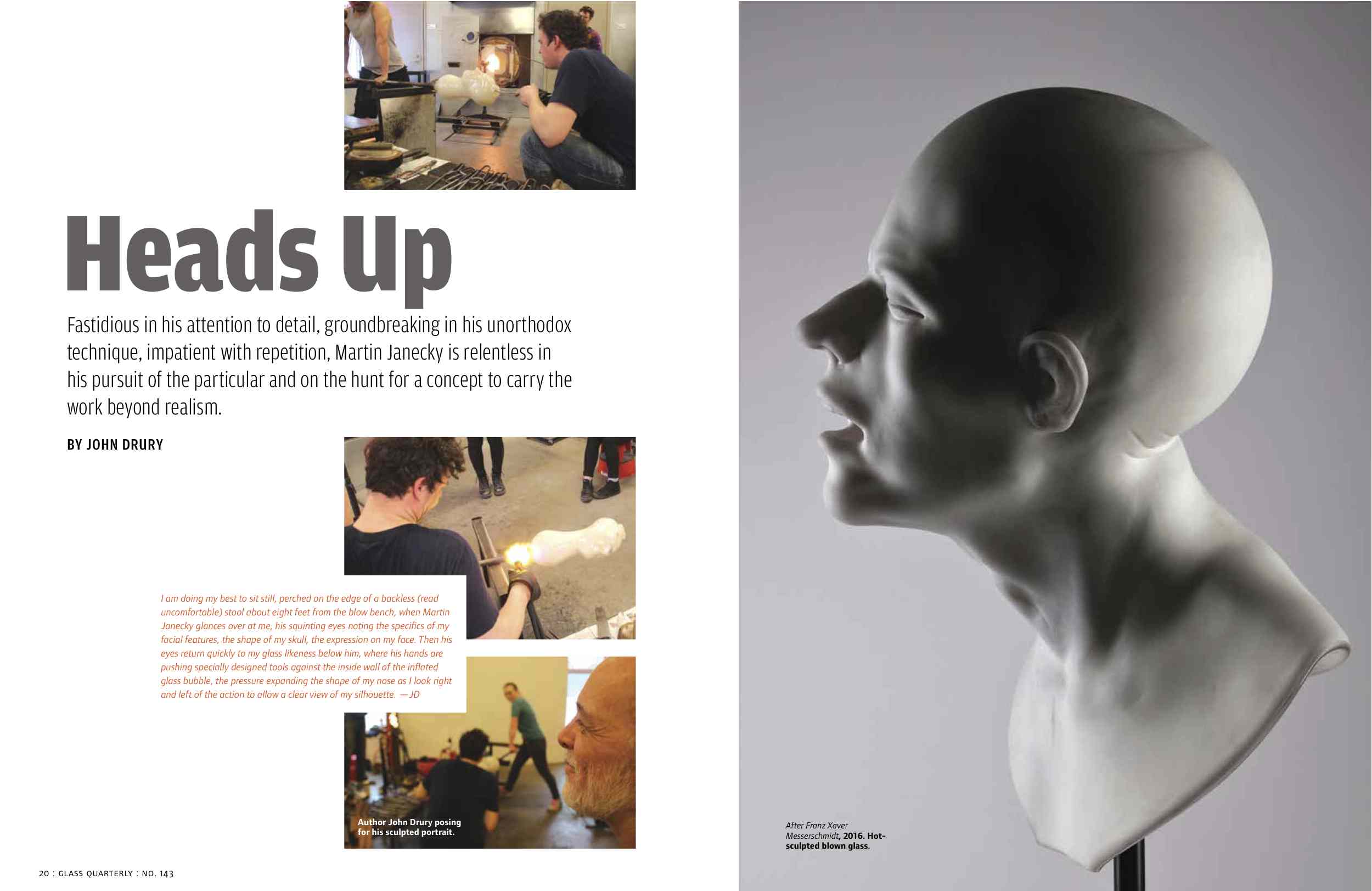
But why choose realism in the first place? Responding to the work assembled for the "Lifeforms 2016" exhibition, Pittsburgh-based critic and curator Vicky A. Clark dissects how contemporary artists are employing figuration and to what ends, contrasting with most of the work in glass in the group exhibition. A lot of the efforts to capture nature in glass that are included in the "Lifeforms" exhibition misses the mark, she writes, offering compelling examples from other artists that she argues use figuration to more productive ends. As she writes in the article, Clark prefers the power of achieving a "visceral real-ness," which can carry significant power when "married to strong conceptual strategies." Realism in art is not dead, she argues, but is just being reinvented in new ways that we must pay careful attention to.
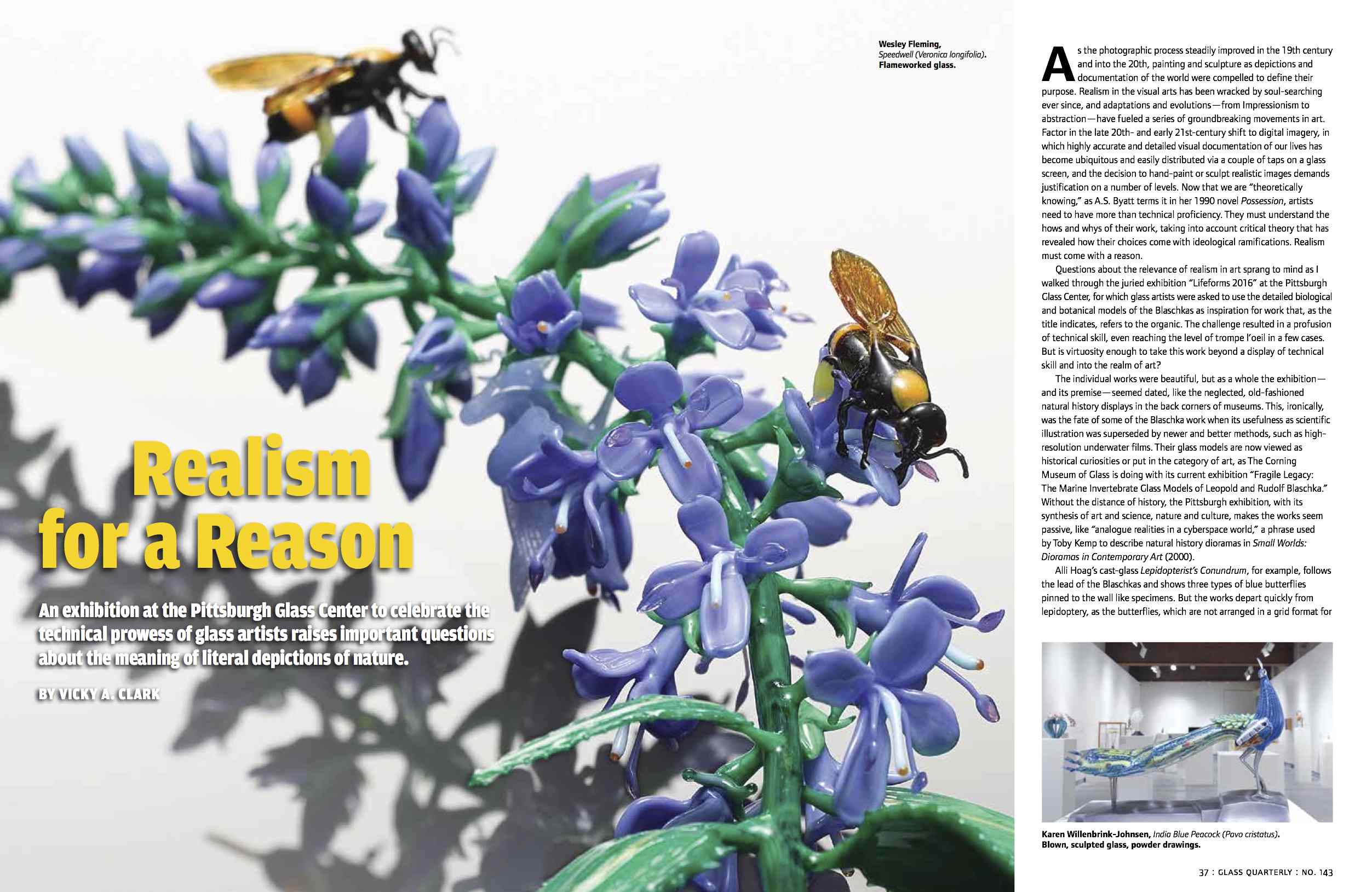
Contributing editor William V. Ganis examines Emily Brock's poignant unpopulated landscapes of a diner — a jewelry store, an artist's studio — and relates them to contemporary interest in miniature worlds. The atmospheric doll-house scale renditions capture moments in time with surprising poignancy. "I like the mystery of the unfinished narrative," Brock has written of her work. "I am interested in the inclusion of the viewer in the story."

Contributing editor William Warmus discusses the work of Raven Skyriver, who worked alongside key William Morris collaborator Karen Willenbrink–Johnsen to evolve his unique style of depicting sea creatures in glass. Warmus, an avid undersea diver, discusses how Skyriver presents these animals in motion, and argues that the compelling gaze of the sculptures fosters a unique cross-species connection while avoiding kitsch.
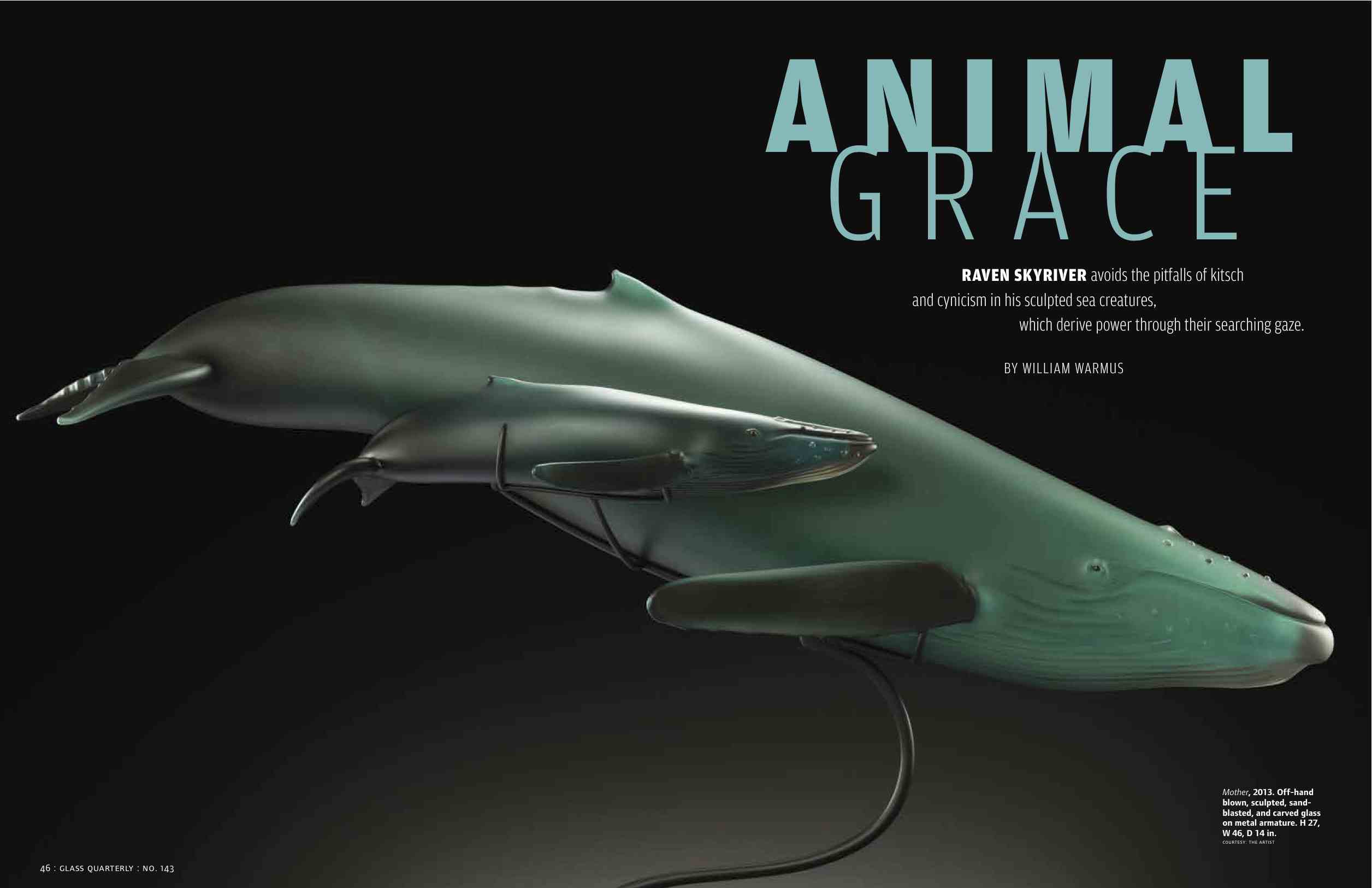
In an in-depth interview with GLASS editor Andrew Page, preeminent botanical glass artist Paul Stankard pulls back the curtain on his process and approach to making one-of-a-kind sculptural interpretations based on close study of native flora. Stankard’s botanical forms have evolved into increasingly complex compositions, involving insects and an imagined underground universe, that are his meditations on the life cycle. The unique power of Stankard's work derives from his intimate understanding of convincing organic structures, which makes his work appear alive.
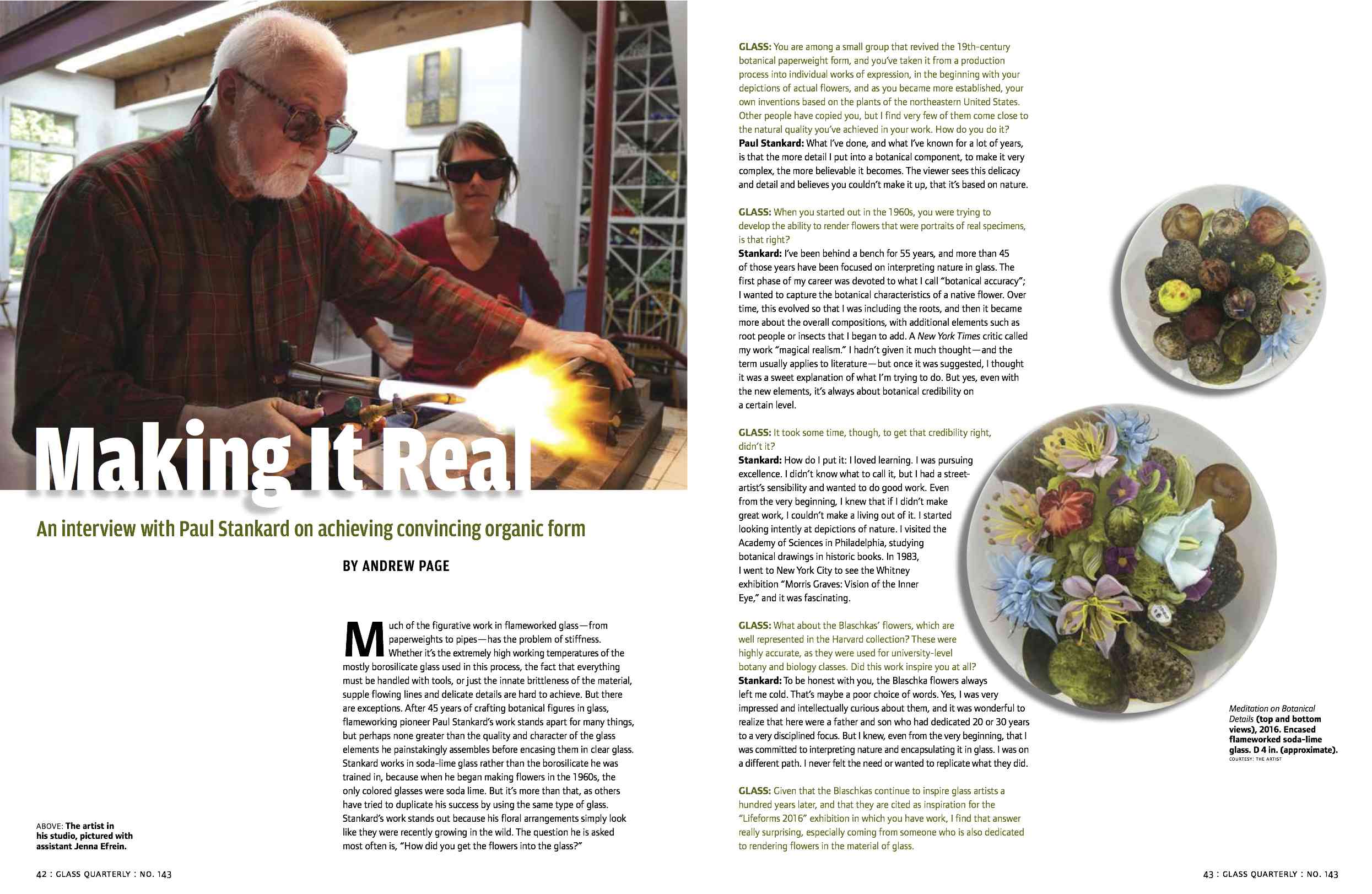
The Summer 2016 issue's engagement with figuration ends with a back-page essay by contributing editor James Yood discussing how compelling realism remains, and the challenge of making sure it remains new and relevant through continuous innovation.
All this, plus four reviews and the latest news from the glass art world.






